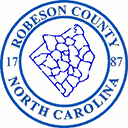Livestock Fencing
go.ncsu.edu/readext?944415
en Español / em Português
El inglés es el idioma de control de esta página. En la medida en que haya algún conflicto entre la traducción al inglés y la traducción, el inglés prevalece.
Al hacer clic en el enlace de traducción se activa un servicio de traducción gratuito para convertir la página al español. Al igual que con cualquier traducción por Internet, la conversión no es sensible al contexto y puede que no traduzca el texto en su significado original. NC State Extension no garantiza la exactitud del texto traducido. Por favor, tenga en cuenta que algunas aplicaciones y/o servicios pueden no funcionar como se espera cuando se traducen.
Português
Inglês é o idioma de controle desta página. Na medida que haja algum conflito entre o texto original em Inglês e a tradução, o Inglês prevalece.
Ao clicar no link de tradução, um serviço gratuito de tradução será ativado para converter a página para o Português. Como em qualquer tradução pela internet, a conversão não é sensivel ao contexto e pode não ocorrer a tradução para o significado orginal. O serviço de Extensão da Carolina do Norte (NC State Extension) não garante a exatidão do texto traduzido. Por favor, observe que algumas funções ou serviços podem não funcionar como esperado após a tradução.
English
English is the controlling language of this page. To the extent there is any conflict between the English text and the translation, English controls.
Clicking on the translation link activates a free translation service to convert the page to Spanish. As with any Internet translation, the conversion is not context-sensitive and may not translate the text to its original meaning. NC State Extension does not guarantee the accuracy of the translated text. Please note that some applications and/or services may not function as expected when translated.
Collapse ▲Fencing is a major component of good grazing management and keeping livestock out of other pastures, private property, and highways. Good fencing provides control over the movement of livestock and how well forages are utilized.
There are two types of fencing – permanent and temporary fencing. Permanent fencing is meant to last a long time and should be built using high quality materials. It should be built around the farm so that it establishes a fixed property line between neighboring properties. Pastures and/or cropland that will be used year after year should be fenced with permanent fencing. Temporary fencing is movable fences used for a short time period in one location, and then moved to another area. Temporary fences cost less to install, but are usually not effective and do not take the place of permanent fences. Temporary fences are usually used for controlled grazing and to break pastures into smaller paddocks. Water resources should be carefully thought about when deciding the layout of the fence and if it will be permanent or temporary fencing.
There are several types of wire that can be used to construct the fences. Woven-wire fences are made up of horizontal lines of smooth wire held apart by vertical wire. The space between horizontal line wires varies (1.5 inches to 9 inches). The spacing between wires gets wider as the fence gets taller. High-tensile fencing is becoming more common for livestock producers because it is easier to construct, lasts longer, and requires less maintenance. High-tensile fences are made with wires that have strengths of 170,000 to 200,000 pounds per square inch. High-tensile fences can stand 1,100 pounds of livestock pressure before losing elasticity. Treated wood posts should be used to withstand pressure by tightly pulled wire. Electric fences are probably one of the most commonly used fences and usually one of the least expensive to install. The biggest thing to consider for electric fencing is an adequate power source. Polywire is a form of temporary electric fencing that is made of fine woven wires. Polywire is used to train animals when implementing controlled grazing methods.
One of the biggest things to consider when choosing fencing is the livestock species. Fencing requirements are different for cattle, sheep and goat, swine, and horses. Size and age play a big factor in fence type and position. Most types of fences will work with cattle, but fence height should be at least 54 inches. Sheep and goat fencing does not need to be as high as cattle fencing, but producers should consider predator control. Woven-wire and electric fences work well with sheep and goats. Barbed fencing usually becomes covered in wool from the sheep. Board fences are ideal for horses because they are easily visible for the horses. Electric fencing can also be used. Fencing for swine should be built close to the ground to keep pigs from rooting underneath the fence. Barbed wire also discourages rooting.
For more information, please contact Taylor Chavis, Extension Livestock Agent with North Carolina Cooperative Extension, Robeson County Center, at 910-671-3276, by email at taylor_chavis@ncsu.edu, or visit our website.




